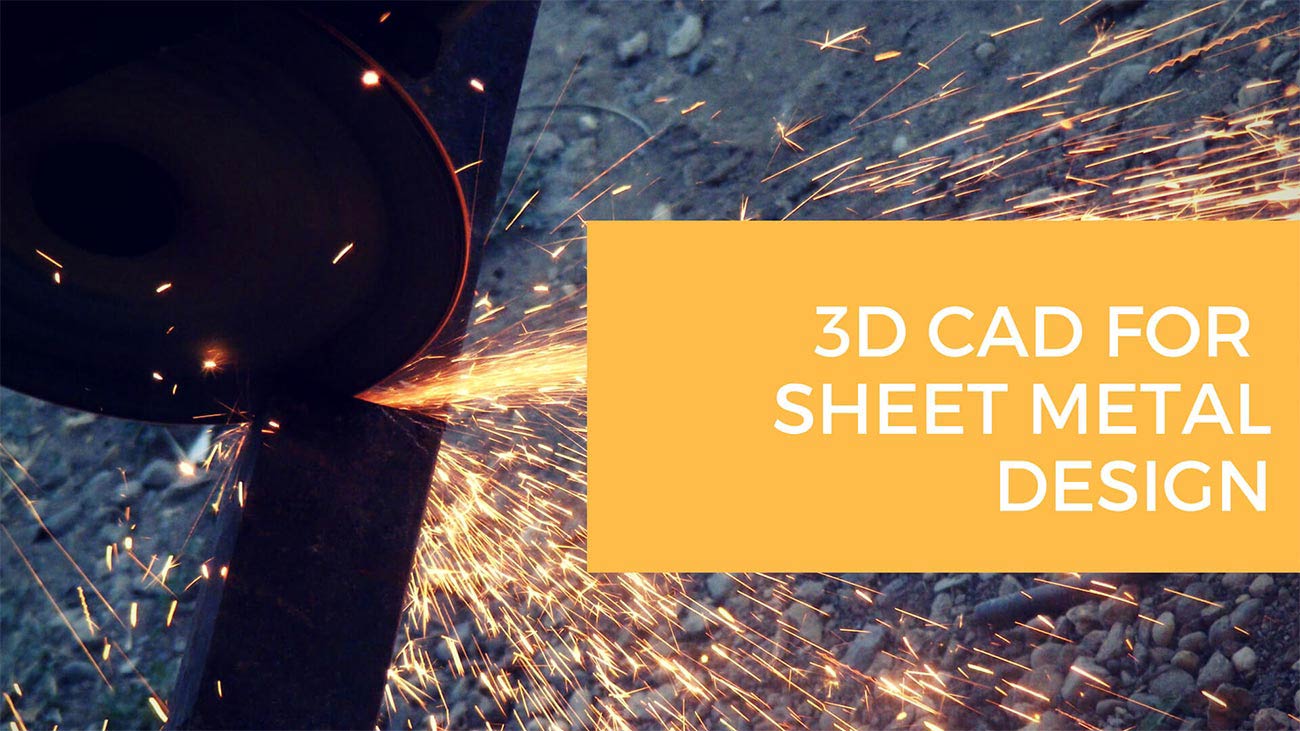Sheet metal fabricators have a special preference for accepting designs in 2D CAD over 3D, and there’s a special reason for that. Despite the benefits of 3D CAD that promises to ensure error-free communication and quick transfer of designs to fabrication floor, most 3D parametric CAD tools developed by software vendors rely on theoretical algorithms rather than based on the actual capabilities of machine tools.
Sheet metal has a special case; you do not have to develop an object or product from a solid, but from a flat metal sheet which required folding, stamping, riveting and hoards of other operations to finally give it a desired shape. Not that CAD tools do not provide this facility to provide allowances with folding and unfolding capabilities, but the underlying algorithm works purely on theoretical concepts. Fabrication units however expect sheet metal product to be designed considering their existing machine capabilities and the kind of material being selected.
This is one of the important reasons why most fabricators prefer to communicate the design intent in 2D rather 3D. Even if the sheet metal product is designed first in 3D, chances are most fabricators would have to rework on the designs to accommodate the errors that might otherwise lead to inefficiencies during actual fabrication. However, this rework often results in delays and at times even causes wastage in materials. And, this is where fabricators need to focus on and look for ways to integrate 3D workflows over 2D.
This is precisely because 3D CAD tools have numerous benefits over 2D. The parametric tools make it easier to edit the designs. Modifying a single dimension in the design automatically updates the all the related features, and as such provides the user a room to check different design alternatives quickly. Besides, the 3D sheet metal design can also be converted to flat pattern and 2D drawings can be extracted from the model easily.
3D CAD tools available today are designed keeping in mind the sheet metal requirements. There are even tools that are specifically designed with sheet metal capabilities. However, the core algorithm still works on the theoretical aspects rather than considering the practical applications. This particular challenge however can be eliminated by bringing in a little help from design support partners.
Engineering service providers specializing in sheet metal design can greatly reduce the rework associated with making the product designs specific to machine requirements. With this setup, fabricators can receive the fabrication drawings in their desired format and that too machine specific. Fabrication units can even experience significant amount of cost and time saving, as they do not require spending time on design rework, and can focus more on their core activity, which is to fabricate efficiently without errors.
Transitioning from a 2D workflow to a 3D one is quite a challenge, given the flexibility in fabrication that fabricators are accustomed to. This is where design support partners can offer a great help. They essentially help in keeping the transition process smooth without affecting the production efficiency and can train the resources simultaneously. This setup of partnering with 3D sheet metal design experts indirectly helps fabricators in maintaining a competitive edge in the market, while opening new possibilities of design automation with the implementation of 3D.
If you’re a fabricator in need of implementing 3D CAD for your metalworking projects, talk to our experts today! Send us your project requirements at [email protected] or send project details directly through the contact form.




